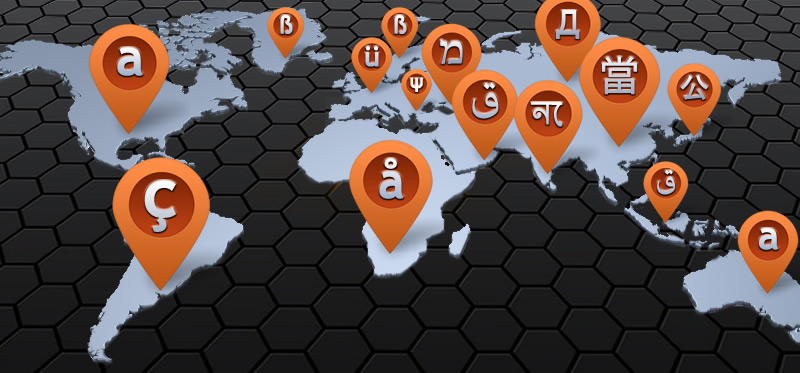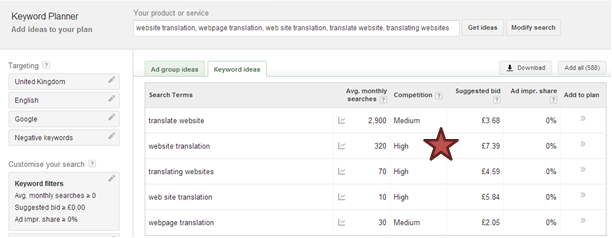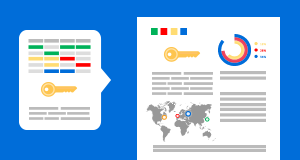If you’re looking to expand your business into new and unfamiliar international markets once you have tested the water and found that there is real potential out there, launching a multilingual version of your website is the next step. It’s all well and good simply translating your web-based content to appeal to consumers overseas but you’ll need to have some sort of strategy in place that’s going to get them visiting your site in the first place.
Having a practical and feasible international SEO strategy is vital in order to reap the rewards of your business’s global expansion. It is important to prioritise your desirables and break these down into manageable chunks which you can implement throughout the year. Ultimately, it’s all about being efficient and effective whilst keeping costs down. A great place to start is through SEO-localisation.
SEO-localisation, or SEO-friendly translation as it’s also known, is definitely one method to consider when developing your international website. This method sees the combined processes of organic SEO and web content translation, to produce fully-localised websites which are SEO-friendly and ready for launch.
SEO and translation are like oil and water; they operate in completely different ways and, like the aforementioned analogy, never really mix. It takes the right combination of the two to result in successful SEO-localisation, and here I’ll outline five benefits of making use of SEO-friendly translation.
1. Time and cost effective
SEO-localisation is an efficient and cost-effective method of concurrently translating and optimising your website to increase your international reach. By combining the two aspects the overall process will be less time-consuming meaning you can spend more time, and potentially more budget, on other aspects of your marketing strategy such as PPC, link building or social media.
Of course SEO-localisation is the ideal solution for completely new multilingual versions of your website where you are starting with a blank canvas, or adding new pages. It’s important that you also consider the technical side of SEO.
2. “…a local shop, for local people”
When launching a website in a new international market it is essential that your company appears local. A good quality translation on its own will do little to draw in the right visitors to your site; however there are a variety of different ways to help towards this. The addition of SEO practices into the equation will enable the relevant search engines to pick up your site through use of appropriate keywords etc., ultimately directing consumers in your target market towards your brand.
3. Less complicated
Traditionally, international SEO processes are conducted and applied to a previously translated website, or later down the line to increase the website’s visibility. This can actually be a little more complicated than the combined workflow of SEO-localisation, as a content review has to be carried out on the pre-translated pages. This means that keywords have to be carefully placed within the existing translation whilst ensuring that the text still reads naturally in the target language. In some cases this can be a complicated way of doing things and may take time to implement successfully.
If you do not have the in-house resources to manage this yourself, you may have to outsource this, incurring extra cost. Changes may have to be made to the actual written content of your website in order to accommodate your chosen keywords which will be a delicate and potentially time-consuming process which can be avoided through the use of SEO-friendly translation.
4. Potentially higher rankings
If you have a successful SEO strategy in place in your home market you could look to replicate this on an international scale. However, be aware that although you may have found great keywords which help you to rank highly in your home country, it’s never a good idea to simply translate keywords as the same meaning may not come across in your target language.
You can always use your existing keywords as inspiration for your multilingual research, which might be of benefit as certain keywords may have less competition in your target country, yielding better rankings overall. Take the examples below which show the levels of competition for the keyword phrase “website translation” in UK English and the equivalent phrase in French, German and Spanish.
UK English
French for France
German for Germany
Spanish for Spain
As we can see, an equivalent keyword phrase in other countries has different levels of competition so although it may have high competition in the UK, in France there is low competition. Incorporating the most appropriate and advantageous keywords into your website translation will help in increasing your chances of ranking higher in SERPs overall.
5. Traffic and rankings
In the long run, the SEO-localisation process will provide you with a ready-to-go website enabling you to follow and assess the ranking of your website, and your click-through and conversion rates from the word go.
Once you have your fully translated and optimised website, you need to make sure that you actively promote your site through strategies like link building, social media and blogs. This will increase your visibility and exposure helping to increase traffic and rankings in the long run. Making the best use of these types of approaches, alongside SEO-localisation, will set you up for international online success!
Emily MacKenzie
Latest posts by Emily MacKenzie (see all)
- What is SEO-localisation? - May 11, 2018
- Agile processes for continuous delivery: A focus on SEO-localisation - May 11, 2018
- E-book review: Undertaking SEO-localisation in a world of continuous delivery - May 11, 2018













Great article. I really like the way you showed the issues with translating keywords word for word. This is even an issue in English to English markets. An Ecommerce sports site optimizing it’s keywords for the UK would have little success with the keyword soccer cleats when in the UK they are called football boots.
A great strategy is to use a translation agency with market native translators to translate your exported keywords from adwords. Have them make suggestions based on their local knowledge. Instead of looking for perfect equivalents look for cultural ones.
Once you have done this set up a landing page and use the translated ads and keywords to drive traffic to that page. You can quickly measure effectiveness and conversions and get a taste for this new market without having to invest heavily in localization.
[…] If you want to expand your business internationally, simply translating your website is not enough – you need to utilise SEO-localisation. Find out More. […]
[…] More: http://blog.webcertain.com/5-benefits-of-seo-localisation-for-international-websites/13/01/2014/ […]